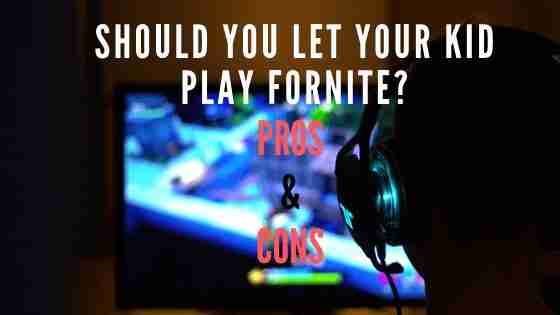7 Ways To Help Your Children Embrace Racial Differences
Share Here
Facebook
Twitter
Instagram
Pinterest
Linkedin
Tumblr
Email
Bloglovin
Snapchat
How To Empower Your Kids To Embrace Racial Differences
In order to create a positive and fair future for our children, parents have the responsibility to empower our children embrace racial differences and appreciate the beauty of all skin colors. There are seven ways to help children embrace racial differences outlined below.
Until just recently, I would of told you that I have done a good job raising my kids to be anti-racist. After spending a significant amount of time reading, listening and self-reflecting… I have no doubt that I can do better.
As a woman of faith, I feel the importance of being more proactive in fighting for racial justice and stand with the oppressed and help create change for our fellow human beings.
I am guessing that you would agree that all children should learn that the world is not fair, and some people treat people differently, just because they look different. It’s wrong and hurtful.
The news these days is sad to watch. No matter how much we want to shield our children from these upsetting times, kids will likely be overhearing conversations about Black Lives Matter, racial differences—and asking questions that should be addressed.
In fact, Americans are experiencing all types of hate—including racism, misogyny, antisemitism, homophobia, transphobia, etc. Some parents worry that their children will be exposed early in childhood, warping their views about diversity and inclusion. In reality, the more open and honest we can be with our children about the real world, the better they will be prepared to be constructive change makers in times to come.
Before we can help our children become more aware and embrace racial differences, we need to be self-aware. Since I have taken time to reflect in the past weeks, I have discovered a new way to look at things… At life.

1. Recognize Colorblindness
As a mother, I’ve always talked to my kids about being kind to everyone. That includes not judging, having color biases or stereotypes. I have been known to say, “I don’t have a racist bone in my body.” “Every human is the same under the skin, that’s why I don’t see color. “As much as I believe this to be true, it’s not helping my kids or the cause. This was a huge a-ha moment for me.
Like many parents, we want our kids to see everyone as equal; therefore, we do not continually point out the differences in skin color in our house. To me, it has a negative, unnecessary tone. While the intentions may be inherently good, I now understand that this “colorblindness” approach is not ideal. Color should be celebrated; it’s what makes each one of us so unique.
“There’s this idea that if you call attention to race at a young age, your poisoning kids’ minds,” says Erin Winkler, chair of the Department of Africology at the University of Wisconsin, Milwaukee.
Research clearly shows that children recognize race from a very young age and develop racial biases by generations three to five years of age. So, if children recognize color before age five, then we should discuss color to avoid racial biased development.
It may surprise you to learn that children learn racial biases from a broader group of community than their parents. Sometimes adults are silent on the issue
of race, prejudice, and racial inequity because we are not comfortable talking about them and then children end up learning from others.
So, what to do? Engage in open, honest, frequent, and age-appropriate conversations about race, racial differences, and even racial inequality.

2. Look For The Opportunity For Dialog
If you live in an area that is not very diverse, the topic of racism may not come up as often because we don’t see racism first-hand in your neighborhoods daily. This is the case with my family. But even so, there are plenty of everyday opportunities to discuss racism with our children; we need to seek them out.
Research suggests that non-white parents talk about racial identity much more frequently with their kids than white parents, but that even minority parents often avoid racial differences. We need to look for the opportunity to have a calm and honest conversation with our kids. Books are a wonderful way to open the lines of communication.
Describing Color
For example, when children are learning colors. We point out the red firetruck or the yellow school bus, but we don’t describe skin tones the same way. Many caregivers are nervous about saying the wrong thing about racism and defining the color of skin; therefore, so they don’t say anything.
I think part of the problem is that parents assume that young children don’t understand and recognize race and racism, so they avoid talking about it with their children. The problem is that if we don’t discuss race, it does not keep children from developing racial biases, it prevents children from talking about and understanding racism. I know I have missed this opportunity way too many times raising my boys.
This missed opportunity happens all the time at school too. Abound, 2008 research study notes that if name-calling or any type of discrimination occurs at school and is not followed up with a discussion with adults, then children will tend to infer that their behavior is acceptable.
Look for ways that you, as a parent, can naturally call out disparities. For example, if your child points out that most professional basketball players are black, it’s okay to bring up that most of the team owners are white and ask what your child thinks that means. Don’t forget our brown skinned friends too!
Ask you child to engage in a conversation with you. For instance, ask them questions such as “What do you notice here? Why do you think that is? Who benefits from the situation? What can we do about it?” It’s interesting to hear what kids say. It’s a powerful way to open the lines of communication about race, inequality etc.
Great books for kids of all ages about racism found here.
When To Talk To Kids About Racism
As a general rule, experts suggest that you talk to all kids often and consistently in a natural fluent fashion.
- 0-5 years discuss skin color differences and bias.
- 6-10 years discuss injustice, bias and injustice.
- 11+ Be direct and concrete and find ways to be anti-racist

3. Understanding Human Bias- Looking Inward
You are not human if you don’t have biases. Being biased is a natural human reaction that often is unconscious, and rooted in inaccurate information or reason and are potentially harmful.
Once we know and accept, we have biases; we can recognize our patterns of thinking. With this type of awareness and conscious effort, we begin to gain the power to change how we think and challenge the negative, harmful biases within ourselves. This is a great lesson for kids!
Name Calling -Racial Profiling- Remarks About Biases
I have taught my kids that we should never form opinions, biases, and remarks about groups of people basis of sex, race, creed, religion, color, national origin, age, veteran, military status, jobs, sexual orientation, gender expression, gender identity or disability, etc. By calling any group a name, it’s disgraceful and hateful. Our world needs more compassion and love not to hate.
Howard J. Ross from the Smithsonian says, “bias is how our minds streamline thinking so we can quickly make sense of the world.
Our brains are biologically designed to perform these quick judgments unconsciously. In early pre-history, this unconscious, streamlined thinking was a form of protection against threats from the natural world. Over time, this way of processing has persisted between individuals and groups of people. When acknowledging another person or group, the brain intuitively forms an opinion – good, bad, or indifferent – often minimizing the complexity and humanity of others. Although bias is automatic, with practice, we can learn to change our thinking to allow a fuller, more nuanced understanding of others.”
So, we must learn to evaluate all of our perceptions and figure out if they are real. Many perceived biases are not genuine or authentic. It’s an excellent exercise to do with our kids.

4. Discuss History, Culture & Racism With Kids
Did you know that most students leave high school without an adequate understanding of the role slavery played in the development of the United States—or how its legacies still influence us today? Crazy huh?
I firmly believe that all Americans should be required to learn about black history and how and why slavery started. Slavery is an open wound that has never healed in our country.
Slavery is to blame for the American caste system today. A false white superiority and black inferiority built from unfair institutions, employment systems, and a flawed criminal justice system.
If our children learn more about how and why slavery happened in our country, they would better understand where we are today and why we need to repair its lingering damage.
We can tell our kids about the Black Lives Matter Movement- and the history behind it. Don’t forget to talk to your kids about what happened to the Japanese Americans in our country after the Peal Harbor bombings as well.
Celebrate the endeavors and accomplishments of colored people throughout history —from the original black legends (like Harriet Tubman and Frederick Douglass) to Civil Rights Movement icons (like Martin Luther King Jr., Angela Davis, and Audre Lorde).
It’s also important to chat with your kids about all of African American culture including music and art. But most important, it’s about the epic challenges and struggles black Americans have had to overcome in order to reach those successes — from slavery to the civil rights struggles that are still ongoing today.
We can say things such as “Even though we don’t have slaves anymore, the history of slavery means that people who are Black are still discriminated against. This means they are not treated fairly. Have you ever been treated unfairly?

5. Teach Kids What Privilege Is
It’s important for our children to understand that not all kids start life with the same resources. There is a reason that many black people live-in run-down neighborhoods. They can’t afford to live anywhere else.
Before we can talk to our kids about privilege, we need to make sure we understand it first. There are a lot of great resources out there that parents can access.
Remember that young children may not know the words “privilege” or “racism” yet, but they can understand the concept of fairness and unfairness. So use examples or what this looks like so they can start to see this themselves.
Kids Understand Fairness-Use the word “unfair”
For example, tell your kids that racism means some people are given extra benefits/privileges just because they are white, and other people are given less just because they are Black or brown. It’s not fair.
Use Analogies
Analogies and stories are a wonderful. For instance, ask children what they would feel like if a teacher treated all the kids in the class with brown eyes an extra recess but the blue and green eyed kids had to stay in the classroom? That wouldn’t be fair would it?
It means some people are treated harshly when they make a mistake just because they are black or brown, but when white people make the same mistake, they don’t get the same kind of punishment. Sometimes they don’t get any punishment at all. That is very unfair.
“It is very important that parents talk to their kids about privilege, including white privilege, because this is one of the ways that systemic racism is maintained in this country,” said Gabriela Livas Stein, an associate professor of psychology at the University of North Carolina.
When people don’t understand or acknowledge that their success is not just a result of hard work but also due to unearned advantages, they then make assumptions about the reasons why others have failed ― like they did not work hard enough or did not try to get out of poverty. These beliefs then underlie policy, voting and other decisions about how we as a society support those in poverty, which disproportionately are Black and brown people.”

6. Be A Good Role Model
Children start to pick up on every nuance they learn from their parents, books, community, and media, etc. Nowadays, our kiddos are exposed to YouTube, games, TV, movies, and books at an early age, that parents need to be more proactive in teaching kids about racism, bias’s and forming opinions about people. As parents, kids will model our behavior, so we must always be aware of how we act around our kids when we are around people of color and watching media, etc.
Setting a good example is so important. What are you doing to stand for justice? Helping children develop compassion and empathy by helping others, showing respect, being honest and fair and maintaining self-respect is key.
It’s a goal of mine as a parent that my kids develop a ethical, moral compass and character share these traits:
• Show compassion
• Honest and fair
• Display self-discipline in setting and meeting goals
• Make good judgments
• Show respect to others
• Show courage in standing up for beliefs
• Have a strong sense of responsibility
• Are good citizens who are concerned for their community, and
• Maintain self-respect
• Treat others like you want to be treated
By teaching our youngsters that some kids don’t have a house, live in safe neighborhoods or have supportive loving parents as well as other material things. When kids learn the reality of life for those in need, they can then develop empathy and compassion for others.
This is an ideal time to discuss ways to support kids that may have less. When they are old enough, talking to our kids about white privilege is important too.
Also, are you mingling with diverse group of people?

7 . Discuss Current Events, Books & Encourage Questions
Kids and teens will have lots of questions about racism and the violence taking place in our country. There will be some uncomfortable questions, so be calm and relaxed as you answer them. For instance, many kids will ask about the violence taking place in our country right now.
By tolerating discomfort, you’re modeling an essential skill for your child. Be honest, and it’s okay to show emotion.
Books about race can be really helpful, for instance, Let’s Talk about Race by Julius Lester is a great choice for young kids based on what I hear from friends.
With these seven simple steps will help our children embrace racism and change systemic racism in the future.
There are 10 ways to be proactive and stand-up for racism justice, see more here.









